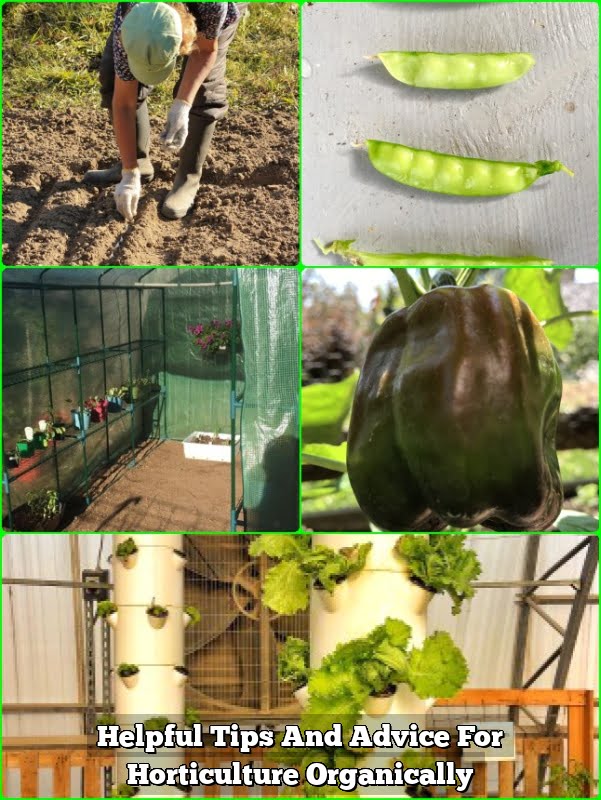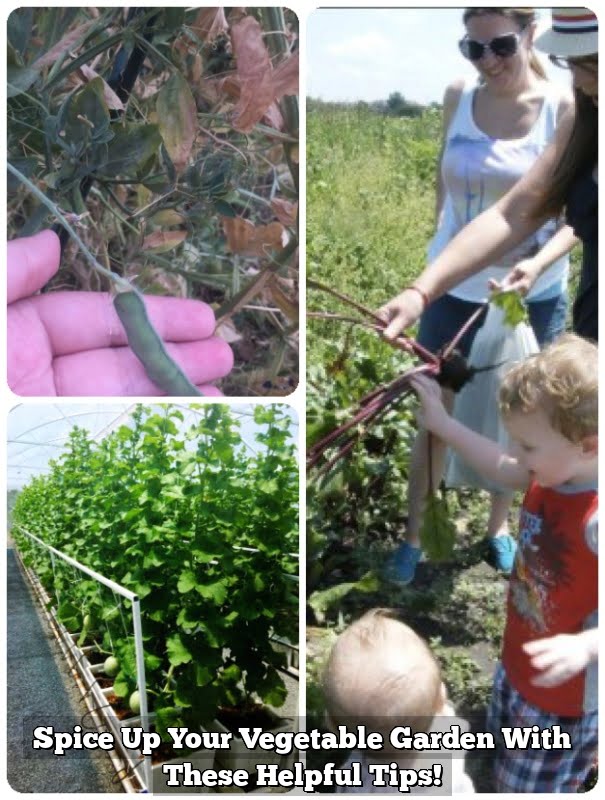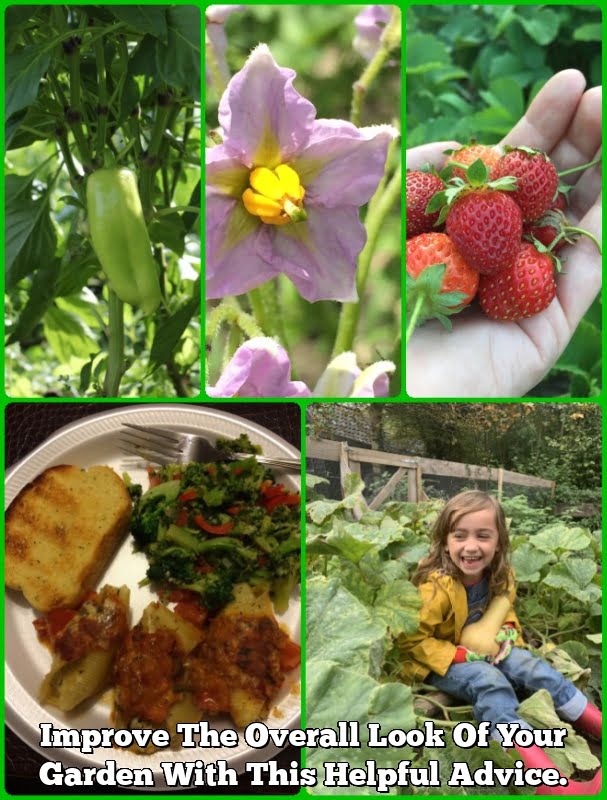Are you interested in starting your own vegetable garden but don’t know where to begin? In this article, we will provide helpful vegetable gardening tips to help you get started. Whether you’re a beginner or an experienced gardener, these tips will set you on the right path to a successful and bountiful harvest.
Vegetable gardening offers numerous benefits, both for your physical health and mental well-being. Not only does it provide you with fresh, organic produce, but it also gives you the opportunity to enjoy the outdoors and connect with nature. Additionally, gardening can be a therapeutic and stress-relieving activity that brings joy and satisfaction as you watch your plants grow and thrive.
When it comes to vegetable gardening, choosing the right location is crucial for the success of your garden. Factors such as sunlight exposure, soil quality, and accessibility are important considerations when selecting a suitable spot for your vegetable patch.
In the following sections, we will discuss essential tools and equipment, soil preparation, plant selection, planting and maintenance techniques, harvesting and storage tips, as well as ways to extend your growing season. So let’s dive into these helpful vegetable gardening tips.
Choosing the Right Location for Your Vegetable Garden
When it comes to starting a vegetable garden, one of the most important decisions you’ll make is choosing the right location for your garden. Whether you’re a beginner or an experienced gardener, selecting the best spot for your vegetables will greatly impact the success of your garden. Here are some key factors to consider when choosing the location for your vegetable garden.
Sunlight and Shade
One of the most important considerations when choosing a location for your vegetable garden is sunlight. Most vegetables need at least 6-8 hours of direct sunlight each day to thrive. When selecting a spot for your garden, observe how much sun and shade different areas of your yard receive throughout the day. Choose a location that receives ample sunlight, especially in the morning and early afternoon.
Soil Quality
Another crucial factor in choosing the right location for your vegetable garden is soil quality. Vegetables thrive in well-draining soil that is rich in organic matter. Test the soil in different areas of your yard to determine its pH level and composition. Look for a location with loamy, well-draining soil that can be easily amended with compost or other organic materials.
Essential Tools and Equipment for Successful Vegetable Gardening
When it comes to successful vegetable gardening, having the right tools and equipment is essential. Whether you are a beginner or an experienced gardener, having the proper tools can make a big difference in the health and productivity of your vegetable garden. Here are some essential tools and equipment that every vegetable gardener should have:
Basic Hand Tools
A set of basic hand tools is essential for any vegetable gardener. These include a sturdy trowel for planting and transplanting, a hand fork for weeding and aerating the soil, and a sharp pair of pruning shears for trimming and harvesting. Quality tools will make your gardening tasks easier and more efficient.
Garden Hoe
A garden hoe is an important tool for any vegetable garden. It can be used to break up soil, remove weeds, and create furrows for planting seeds. There are different types of garden hoes available, so choose one that best suits the needs of your specific garden.
Irrigation Equipment
Proper watering is crucial for the success of your vegetable garden. Invest in a good quality hose, watering cans, or drip irrigation system to ensure that your plants receive the right amount of water. Consider purchasing a rain gauge to measure rainfall and determine if additional watering is necessary.
In addition to these basic tools and equipment, having items such as gloves, kneeling pads, and a wheelbarrow can also be very helpful when tending to your vegetable garden. It’s important to invest in high-quality tools that will last for many growing seasons and make your gardening experience more enjoyable. Utilizing these helpful vegetable gardening tips will ensure that you have all the necessary tools at hand for a successful harvest year after year.
Preparing the Soil
When it comes to vegetable gardening, one of the most crucial steps for success is preparing the soil. Understanding pH levels, soil amendments, and fertilization can make a significant difference in the health and productivity of your garden. Here are some helpful vegetable gardening tips to consider when preparing the soil for your vegetable garden:
- Test the pH level of your soil: Before planting your vegetables, it’s essential to test the pH level of your soil. Most vegetables thrive in soil with a pH level between 6.0 and 7.0. You can easily test the pH level of your soil using a simple soil testing kit available at garden centers or through your local cooperative extension office.
- Add organic matter and nutrients: Once you have determined the pH level of your soil, you may need to make amendments to improve its fertility. Adding organic matter such as compost, manure, or grass clippings can help improve drainage, water retention, and nutrient content in the soil. Additionally, incorporating organic fertilizers that are high in nitrogen, phosphorus, and potassium can provide essential nutrients for healthy plant growth.
- Consider using raised beds or containers: If the natural soil in your chosen location is not suitable for vegetable gardening due to poor drainage or high clay content, consider creating raised beds or using containers filled with quality potting mix. This allows you to have more control over the soil composition and makes it easier to maintain optimal growing conditions for your vegetables.
By following these helpful vegetable gardening tips for preparing the soil, you can create a fertile environment that will support healthy plant growth and maximize the yield of your vegetable garden. With proper attention to pH levels, soil amendments, and fertilization, you’ll be well on your way to growing a successful and bountiful harvest of fresh produce right in your backyard or patio.
Selecting the Best Vegetables for Your Garden
When it comes to selecting the best vegetables for your garden, there are a few key factors to consider. Whether you’re a beginner or an experienced gardener, choosing the right vegetables can make a big difference in the success of your garden. Here are some helpful vegetable gardening tips to keep in mind when selecting what to plant:
- Climate and Season: Consider the climate and growing season in your region. Certain vegetables thrive in specific climates and seasons, so it’s important to choose vegetables that are well-suited to your local conditions.
- Space and Size: Take into account the space available in your garden and the size of the plants when fully grown. Some vegetables, such as squash and pumpkins, require plenty of space to spread out, while others, like carrots and radishes, can be grown in smaller areas.
- Preferences and Needs: Think about your own preferences and dietary needs when selecting vegetables for your garden. Consider what you enjoy eating and what will be most beneficial for you and your family.
For beginners, starting with easy-to-grow vegetables like tomatoes, lettuce, and peppers can be a great way to gain confidence and experience before moving on to more challenging crops. Experienced gardeners may want to experiment with specialty or heirloom varieties that are less commonly found in grocery stores.
Ultimately, the best vegetables for your garden will depend on a variety of factors unique to your individual situation. By considering these helpful vegetable gardening tips, you can make informed decisions about which vegetables to plant and set yourself up for a successful growing season.
Planting and Maintenance
When it comes to planting and maintaining your vegetable garden, there are a few important factors to consider in order to ensure a successful harvest. First, when it comes to seeding, it’s crucial to follow the instructions on the seed packets.
Make sure to plant seeds at the appropriate depth and spacing for each type of vegetable. Additionally, keep in mind that some vegetables may require starting indoors and then transplanting them into your garden once they’ve reached a certain size.
Watering is another essential aspect of vegetable gardening. Different vegetables have different watering needs, so it’s important to research and understand how much water each type of plant requires. Generally, vegetables need at least 1-2 inches of water per week, either through rainfall or irrigation. It’s also important to water your plants at the base rather than from above to prevent disease and ensure proper absorption.
Pest control is often a concern for many gardeners, but there are several ways to manage pests without using harmful chemicals. One helpful tip is to encourage beneficial insects such as ladybugs and praying mantises in your garden, as they can help control pest populations naturally.
Additionally, regularly inspecting your plants for signs of pests or disease can help catch any issues early on before they become a major problem. Applying natural remedies such as neem oil or introducing companion plants that repel pests can also be helpful.
By keeping these helpful vegetable gardening tips in mind when it comes to seeding, watering, and pest control, you’ll be well on your way to cultivating a thriving and bountiful vegetable garden.
Harvesting and Storing Your Vegetable Garden Produce
After nurturing your vegetable garden through the planting and maintenance stages, it’s finally time to enjoy the fruits of your labor. Harvesting your produce at the right time is crucial for ensuring that you get the best flavor and nutritional value from your vegetables. Always remember to use sharp pruners or scissors to avoid damaging the plants, and harvest in the early morning for optimal freshness.
Proper storage is also essential to prolong the shelf life of your harvested vegetables. Some vegetables like carrots and beets can be stored in a cool, dark place for several weeks, while others like tomatoes and cucumbers are best kept in the refrigerator. Understanding the specific storage needs of each type of vegetable will help you avoid spoilage and waste.
To make sure that none of your hard-earned harvest goes to waste, consider preserving any excess produce through canning, freezing, or pickling. This will allow you to enjoy your homegrown vegetables even during the off-season. Whether you’re a beginner or an experienced gardener, these helpful vegetable gardening tips for harvesting and storing will ensure that you make the most out of your bountiful harvest.
| Vegetable | Storage Method |
|---|---|
| Carrots | Cool, dark place for several weeks |
| Tomatoes | Refrigerator |
| Cucumbers | Refrigerator |
Helpful Tips for Extending Your Vegetable Gardening Season
Extending your vegetable gardening season can allow you to enjoy fresh produce for a longer period of time. There are several helpful vegetable gardening tips that can help you achieve this goal.
One helpful tip is to use row covers or cold frames to protect your plants from frost and cold temperatures, allowing you to continue growing even as the weather cools down. Additionally, planting cold-tolerant vegetables such as kale, carrots, and Brussels sprouts can help prolong your growing season well into the fall and winter months.
Another useful tip for extending your vegetable gardening season is to utilize mulch to retain soil warmth and protect plants from sudden temperature drops. Mulching also helps control weeds and conserve soil moisture, which is essential for healthy plant growth. Furthermore, consider using containers or raised beds for your garden, as they can be moved indoors during particularly harsh weather conditions, providing an extra layer of protection for your plants.
In addition, implementing succession planting – where new crops are planted as old ones are harvested – can help maximize your garden’s productivity throughout the growing season. This technique ensures a continuous harvest of fresh produce and makes the most out of available space in your garden. By using these helpful vegetable gardening tips, you can effectively extend your gardening season and continue reaping the rewards of homegrown vegetables well beyond the typical growing period.
| Vegetable Gardening Tip | Description |
|---|---|
| Use of row covers or cold frames | Protects plants from frost and cold temperatures, allowing for continued growth in cooler weather |
| Utilize mulch | Retains soil warmth, protects plants from temperature fluctuations, controls weeds, and conserves soil moisture |
| Implement succession planting | Maximizes garden productivity by planting new crops as old ones are harvested |
Conclusion
In conclusion, vegetable gardening can be a rewarding and fulfilling experience for both beginners and experienced gardeners. The process of growing your own food not only provides fresh and healthy options for your meals but also allows you to connect with nature and gain a sense of accomplishment. By following the helpful vegetable gardening tips provided in this article, you can set yourself up for success and enjoy the many benefits that come with tending to your garden.
The satisfaction of harvesting vegetables that you have nurtured from seed to maturity is truly unmatched. Whether it’s the joy of seeing vibrant green leaves peeking out from the soil or the delight of plucking ripe tomatoes from the vine, every stage of the gardening process brings its own sense of fulfillment. The act of cultivating a successful vegetable garden can also foster a greater appreciation for the environment and an understanding of where our food comes from.
Furthermore, extending your vegetable gardening season can allow you to enjoy fresh produce for a longer period of time. By utilizing techniques such as succession planting, using season extenders like cloches or row covers, and choosing cold-hardy vegetables, you can continue reaping the rewards of your garden well into the fall or even winter months. With dedication, patience, and these helpful vegetable gardening tips, you can create a thriving garden that provides nourishment for both body and soul.
Frequently Asked Questions
What Are 5 Things You Should Do to Prepare a Good Veggie Garden?
To prepare a good veggie garden, it’s important to start by choosing the right location with plenty of sunlight and well-draining soil. Next, you should enrich the soil with organic matter, like compost or manure, to provide essential nutrients for your veggies.
It’s also crucial to plan out the layout of your garden and choose the vegetables that are suitable for your climate and growing season. Proper watering and regular weeding are also necessary for a successful veggie garden.
How Do You Grow a Perfect Vegetable Garden?
Growing a perfect vegetable garden requires careful planning and attention to detail. Start by selecting the right vegetables for your growing zone and ensuring they have enough space to thrive. Prepare the soil by adding compost or fertilizer and make sure to water regularly, either through drip irrigation or manual watering.
Keep an eye out for pests and diseases, as early intervention can prevent damage to your crops. Lastly, be patient, as growing a perfect vegetable garden takes time and consistent care.
How Can I Make My Vegetables Grow Better?
If you want to make your vegetables grow better, start by providing them with optimal growing conditions. This includes ensuring they receive enough sunlight, proper watering, and well-draining soil with added organic matter for nutrients.
Regularly feeding your vegetables with a balanced fertilizer can also help promote healthy growth. Additionally, practicing crop rotation can prevent depletion of nutrients from the soil and reduce the risk of pests and diseases.

If you’re looking to get into vegetable gardening, or are just looking for some tips on how to make your current garden better, then you’ve come to the right place! My name is Ethel and I have been gardening for years. In this blog, I’m going to share with you some of my best tips on how to create a successful vegetable garden.





